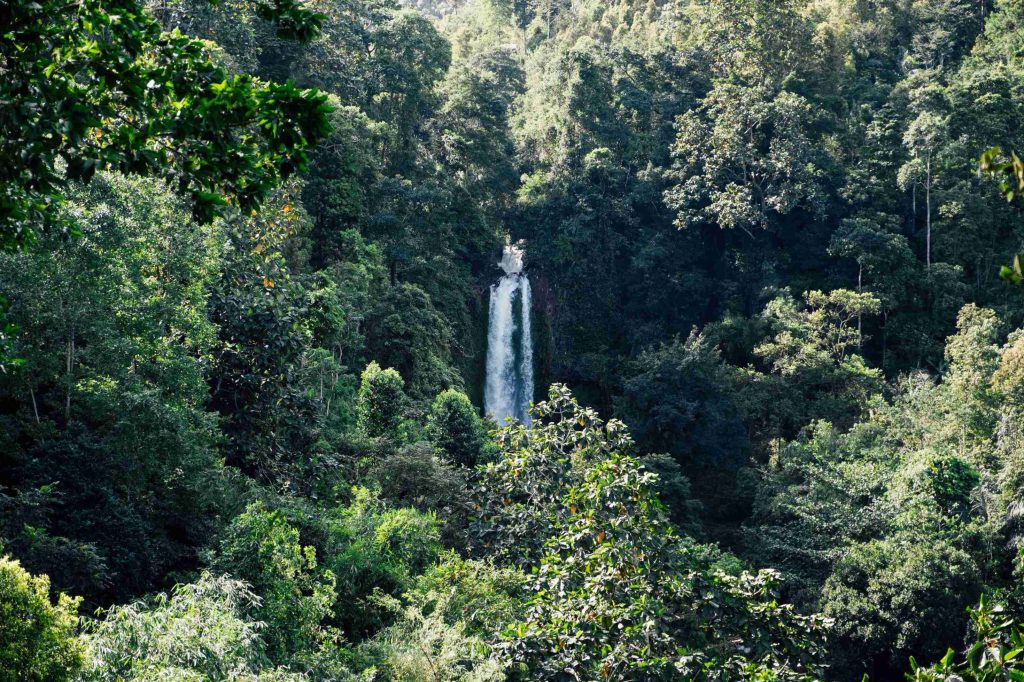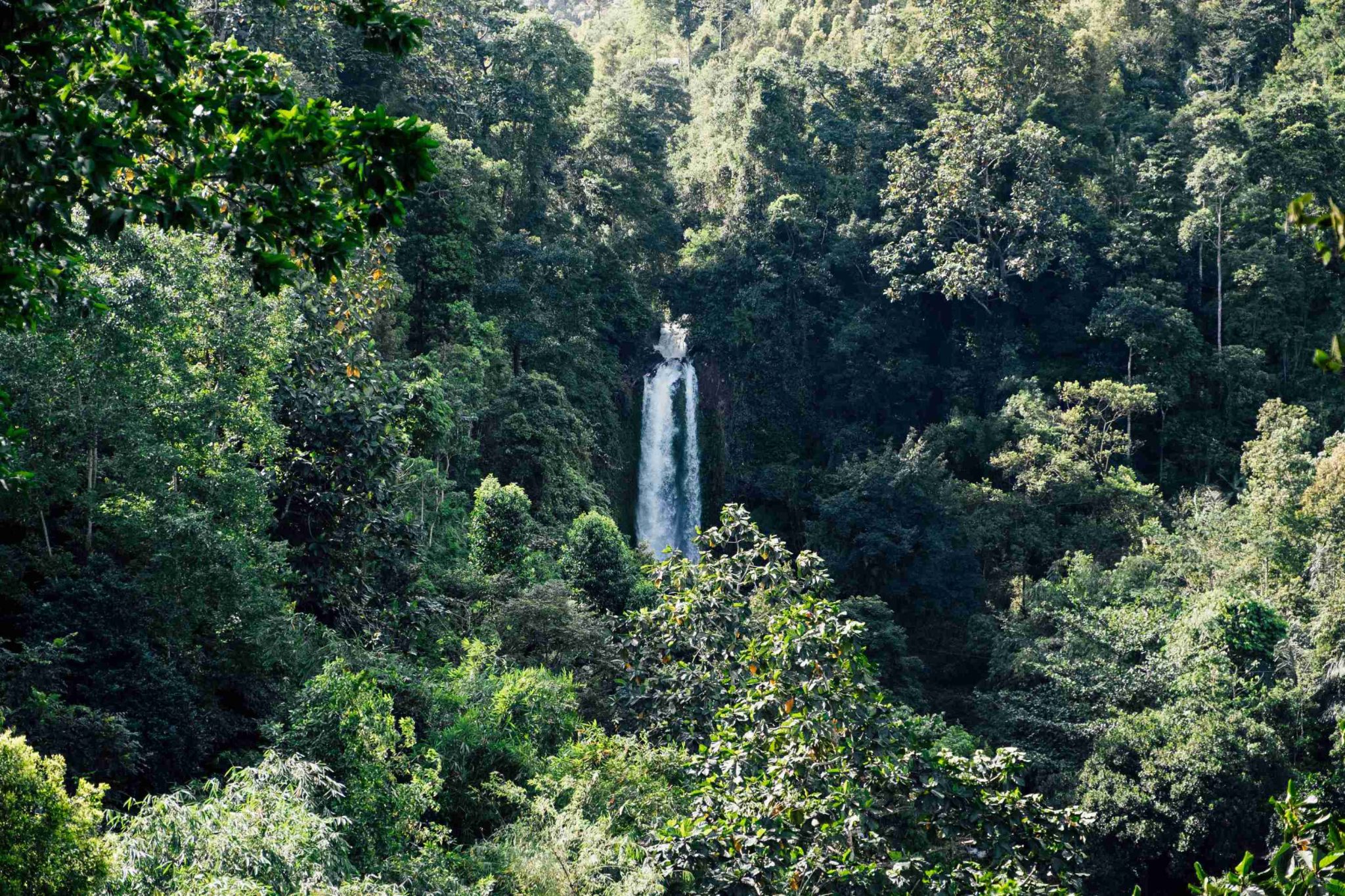The jungle is often seen as a vast, untamed wilderness—a place of mystery, danger, and raw beauty. But beyond its towering trees and dense undergrowth lies an intricate, living network that is as intelligent as it is ancient. The jungle ecosystem of Bukit Lawang, nestled within the Gunung Leuser National Park, is more than just a sanctuary for wildlife; it is a dynamic system that has evolved over millions of years, shaping the very foundation of life in Sumatra. Every tree, insect, and predator plays a critical role in maintaining this delicate balance, forming a world where survival depends not just on strength but on adaptation, cooperation, and resilience.
While visitors often come to marvel at the famous Sumatran orangutans, few realize the incredible complexity that sustains these rainforests—where plants communicate through underground networks, animals form unlikely alliances, and the forest itself breathes in ways that impact the global climate. Understanding this hidden world allows us to appreciate the jungle not just as a tourist destination but as a crucial part of our planet’s ecosystem, one that desperately needs our protection.
10 Fascinating Facts About Jungle Ecosystems in Bukit Lawang

Bukit Lawang, located on the edge of the vast Gunung Leuser National Park in Sumatra, Indonesia, is a biodiversity hotspot teeming with life. Its lush jungle ecosystem supports a rich variety of flora and fauna, making it a prime destination for nature lovers, researchers, and conservationists. The dense rainforests of Bukit Lawang are more than just a beautiful landscape—they play a crucial role in regulating climate, sustaining wildlife, and supporting indigenous communities. Here are ten fascinating facts about the jungle ecosystem in Bukit Lawang that will deepen your appreciation for this extraordinary natural wonder.
1. Bukit Lawang Is Home to One of the Last Strongholds of Sumatran Orangutans
Bukit Lawang is internationally famous as a sanctuary for the critically endangered Sumatran orangutan (Pongo abelii). These intelligent primates share approximately 97% of their DNA with humans, making them one of our closest relatives. The dense jungle provides the perfect habitat for these arboreal creatures, who spend most of their lives swinging through the treetops. Conservation efforts in Bukit Lawang have been instrumental in rehabilitating and protecting orangutans from threats like deforestation and illegal poaching.
2. The Jungle Acts as the “Lungs of the Earth”
Rainforests like those in Bukit Lawang play a vital role in producing oxygen and absorbing carbon dioxide. The dense vegetation continuously absorbs greenhouse gases, helping to mitigate climate change. The trees and plants in the jungle are part of a vast carbon sink that regulates global temperatures and maintains air quality for the entire planet.

3. Over 700 Species of Trees Thrive in This Jungle
Bukit Lawang’s jungle ecosystem supports an astonishing variety of plant life, including more than 700 different species of trees. Towering dipterocarps, strangler figs, and giant ferns create a multi-layered forest canopy that provides food, shelter, and nesting grounds for countless animals. Many of these trees also have medicinal properties and are used in traditional Indonesian medicine.
Also read: Bukit Lawang Jungle Trekking : Embark On An Adventure Of A Lifetime
4. A Hidden Pharmacy: Medicinal Plants Abound
Local communities and indigenous tribes have long relied on the jungle’s medicinal plants for healing. Plants like Tongkat Ali (Eurycoma longifolia) are known for their stamina-boosting properties, while Sambiloto (Andrographis paniculata) is used to treat infections and fevers. The jungle is a living pharmacy, offering countless natural remedies that modern science is still uncovering.
5. Unique Symbiotic Relationships Between Species
The jungle of Bukit Lawang is a complex web of interdependent species. Many plants and animals have developed mutualistic relationships to survive. For example, fig trees and fig wasps rely on each other for reproduction: the tree provides food, while the wasp pollinates its flowers. Another example is the relationship between leafcutter ants and fungi—the ants cultivate fungus as their primary food source, and in return, the fungus breaks down leaves into digestible nutrients.
6. The Jungle Is a Nocturnal Wonderland
While many visitors marvel at the wildlife during the day, the jungle of Bukit Lawang truly comes alive at night. Nocturnal creatures such as slow lorises, tarsiers, and flying squirrels emerge after sunset, revealing a hidden world of activity. Glow-in-the-dark fungi, bioluminescent insects, and the eerie calls of night birds add to the magical experience of nighttime jungle trekking.
7. Rare and Elusive Big Cats Roam the Area
Although difficult to spot, Bukit Lawang’s jungle is home to some of the world’s rarest big cats, including the critically endangered Sumatran tiger (Panthera tigris sumatrae) and the elusive clouded leopard (Neofelis diardi). These apex predators play a crucial role in maintaining ecological balance by controlling herbivore populations and ensuring the health of the jungle.
8. More Than 300 Bird Species Call This Jungle Home
Birdwatchers will find paradise in Bukit Lawang, where over 300 species of birds can be found soaring through the canopy or hiding among the dense foliage. Vibrant hornbills, kingfishers, and the elusive Argus pheasant are just a few of the magnificent birds that inhabit the region. Many of these species play an essential role in seed dispersal, contributing to the regeneration of the forest.
Also read: 5 Best Hotels To Stay In Bukit Lawang For A Unique Jungle Experience
9. The Rainforest Has Its Own Microclimate
Bukit Lawang’s rainforest creates its own microclimate due to its dense vegetation, humidity, and high levels of transpiration from plants. This self-sustaining system ensures steady rainfall, moderate temperatures, and rich soil nutrients, all of which contribute to the jungle’s incredible biodiversity. The consistent humidity levels also help maintain the health of epiphytic plants like orchids and mosses, which thrive in the damp environment.
10. The Jungle Is Under Threat but Conservation Efforts Are Making a Difference
Despite its incredible biodiversity, Bukit Lawang’s jungle faces threats from illegal logging, palm oil plantations, and habitat destruction. However, conservation programs led by local and international organizations are working to protect this precious ecosystem. Ecotourism plays a significant role in funding these conservation efforts, providing jobs for local communities and promoting sustainable practices that help preserve the jungle for future generations.
Conclusion
The jungle ecosystem of Bukit Lawang is a marvel of nature, home to a staggering array of wildlife, plants, and natural processes that sustain life on a grand scale. From the ancient trees that produce oxygen to the intricate relationships between species, every aspect of this rainforest contributes to the delicate balance of life. While threats to the jungle remain, ongoing conservation efforts and responsible ecotourism offer hope for its protection. Whether you’re trekking through its dense undergrowth, listening to the calls of wild birds, or spotting a rare primate, Bukit Lawang’s jungle is a place where nature’s wonders come to life in the most breathtaking ways.

Alfath Dewantara is the manager of Jungle Inn Hotel in Bukit Lawang and a leading expert in Bukit Lawang eco-travel. With years of experience in sustainable tourism, he is dedicated to preserving the region’s rich biodiversity while providing authentic jungle experiences for visitors.




